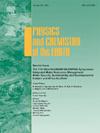西喜马拉雅双鱼河流域土壤侵蚀流域优先排序:多准则决策和基于xai的方法
IF 3
3区 地球科学
Q2 GEOSCIENCES, MULTIDISCIPLINARY
引用次数: 0
摘要
由于极端水文气候事件和人为活动的影响,双鱼河流域正在经历严重的水土流失。因此,确定易侵蚀流域的优先级对有效的土壤资源管理至关重要。本研究提出了一种基于加权复合因子(WCF)的形态计量学分析与基于模糊层次分析法(FAHP)的土壤侵蚀敏感性模型(SESM)相结合的综合方法。两种分析的结果使用模糊叠加进行综合,得出从最高(排名1)到最低(排名20)的流域优先级排名。A01BEA09、A01BEA14和A01BEA19流域的敏感性最高,分别排在第1、2和3位。东部地区A01BEA01和A01BEA02流域易感性最低,分别排在第20和第19位。北部和西北部亚流域7141 km2(57.7%)为高度易感区,4238 km2(33.6%)为中度易感区,1219.55 km2(9.6%)为轻度易感区。SHapley加性解释(SHAP)分析发现土地利用、土地覆盖、坡度、降雨和输沙指数(STI)是影响最大的参数。敏感性分析证实LULC是主导因子,其次是降雨、坡度和STI。排除LULC后,模型的精度从0.843降低到0.628。研究结果强调了土地利用和土地利用资源管理在缓解土壤侵蚀方面的关键作用,土壤侵蚀威胁农业生产力,加速水库沉积,危及粮食和水安全。本研究为利益相关者和决策者在高风险地区制定有针对性的战略和实施流域管理框架提供了有价值的见解。本文章由计算机程序翻译,如有差异,请以英文原文为准。
Soil erosion-induced watershed prioritization in the beas river sub-basin of the western himalayas: A multi-criteria decision-making and XAI-Based approach
Beas River Sub-Basin is experiencing severe soil erosion due to extreme hydro-climatic events and anthropogenic activities. Therefore, prioritizing erosion-prone watersheds is essential for effective soil resource management. This study proposes an integrated approach combining morphometric analysis using weighted compound factor (WCF) and soil erosion susceptibility modelling (SESM) through fuzzy analytical hierarchy process (FAHP). The results from both analyses were integrated using fuzzy overlay to derive watershed priority rankings, from highest (rank 1) to lowest (rank 20). Watersheds A01BEA09, A01BEA14 and A01BEA19, located in the middle sub-basin, showed the highest susceptibility and were ranked 1st, 2nd and 3rd, respectively. In contrast, watersheds A01BEA01 and A01BEA02 in the eastern region showed the lowest susceptibility and were ranked 20th and 19th. The results also show that 7141 km2 (57.7 %) of the northern and northwestern sub-basin is highly susceptible to soil erosion, while 4238 km2 (33.6 %) and 1219.55 km2 (9.6 %) show moderate and slight susceptibility, respectively. The SHapley Additive exPlanations (SHAP) analysis identified land use land cover (LULC), slope, rainfall and sediment transport index (STI) as the most influential parameters. Sensitivity analysis confirmed LULC as the dominant factor, followed by rainfall, slope and STI. Excluding LULC reduced the model's accuracy from 0.843 to 0.628. The findings highlight the critical role of LULC management in mitigating soil erosion, which threatens agricultural productivity, accelerates reservoir sedimentation, and endangers food and water security. This study provides valuable insights for stakeholders and policymakers to develop targeted strategies and implement watershed management frameworks in high-risk areas.
求助全文
通过发布文献求助,成功后即可免费获取论文全文。
去求助
来源期刊

Physics and Chemistry of the Earth
地学-地球科学综合
CiteScore
5.40
自引率
2.70%
发文量
176
审稿时长
31.6 weeks
期刊介绍:
Physics and Chemistry of the Earth is an international interdisciplinary journal for the rapid publication of collections of refereed communications in separate thematic issues, either stemming from scientific meetings, or, especially compiled for the occasion. There is no restriction on the length of articles published in the journal. Physics and Chemistry of the Earth incorporates the separate Parts A, B and C which existed until the end of 2001.
Please note: the Editors are unable to consider submissions that are not invited or linked to a thematic issue. Please do not submit unsolicited papers.
The journal covers the following subject areas:
-Solid Earth and Geodesy:
(geology, geochemistry, tectonophysics, seismology, volcanology, palaeomagnetism and rock magnetism, electromagnetism and potential fields, marine and environmental geosciences as well as geodesy).
-Hydrology, Oceans and Atmosphere:
(hydrology and water resources research, engineering and management, oceanography and oceanic chemistry, shelf, sea, lake and river sciences, meteorology and atmospheric sciences incl. chemistry as well as climatology and glaciology).
-Solar-Terrestrial and Planetary Science:
(solar, heliospheric and solar-planetary sciences, geology, geophysics and atmospheric sciences of planets, satellites and small bodies as well as cosmochemistry and exobiology).
 求助内容:
求助内容: 应助结果提醒方式:
应助结果提醒方式:


